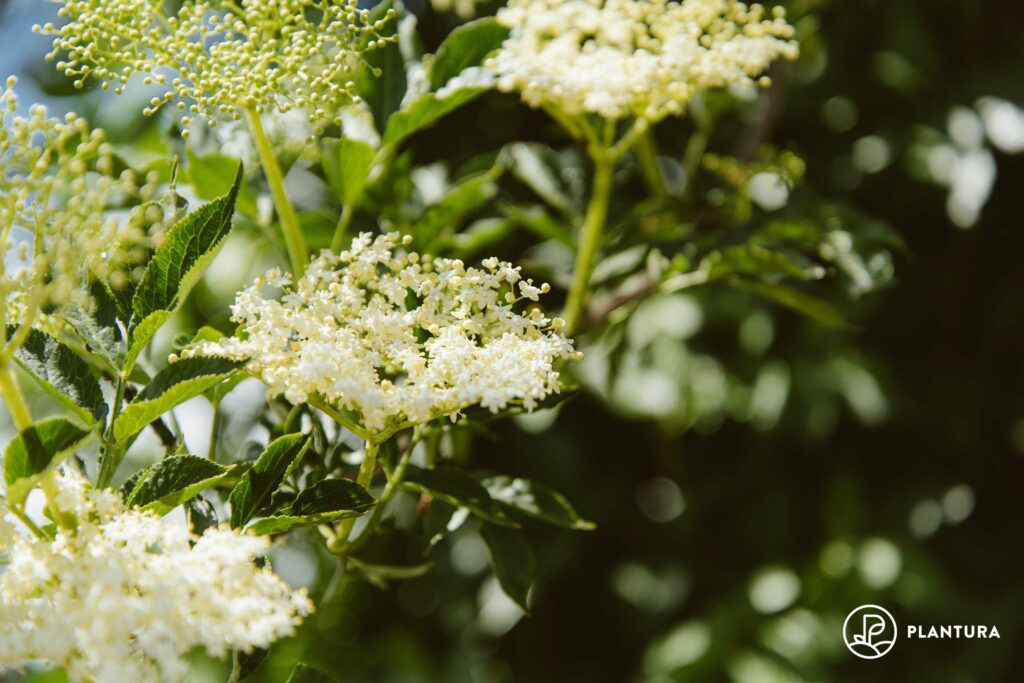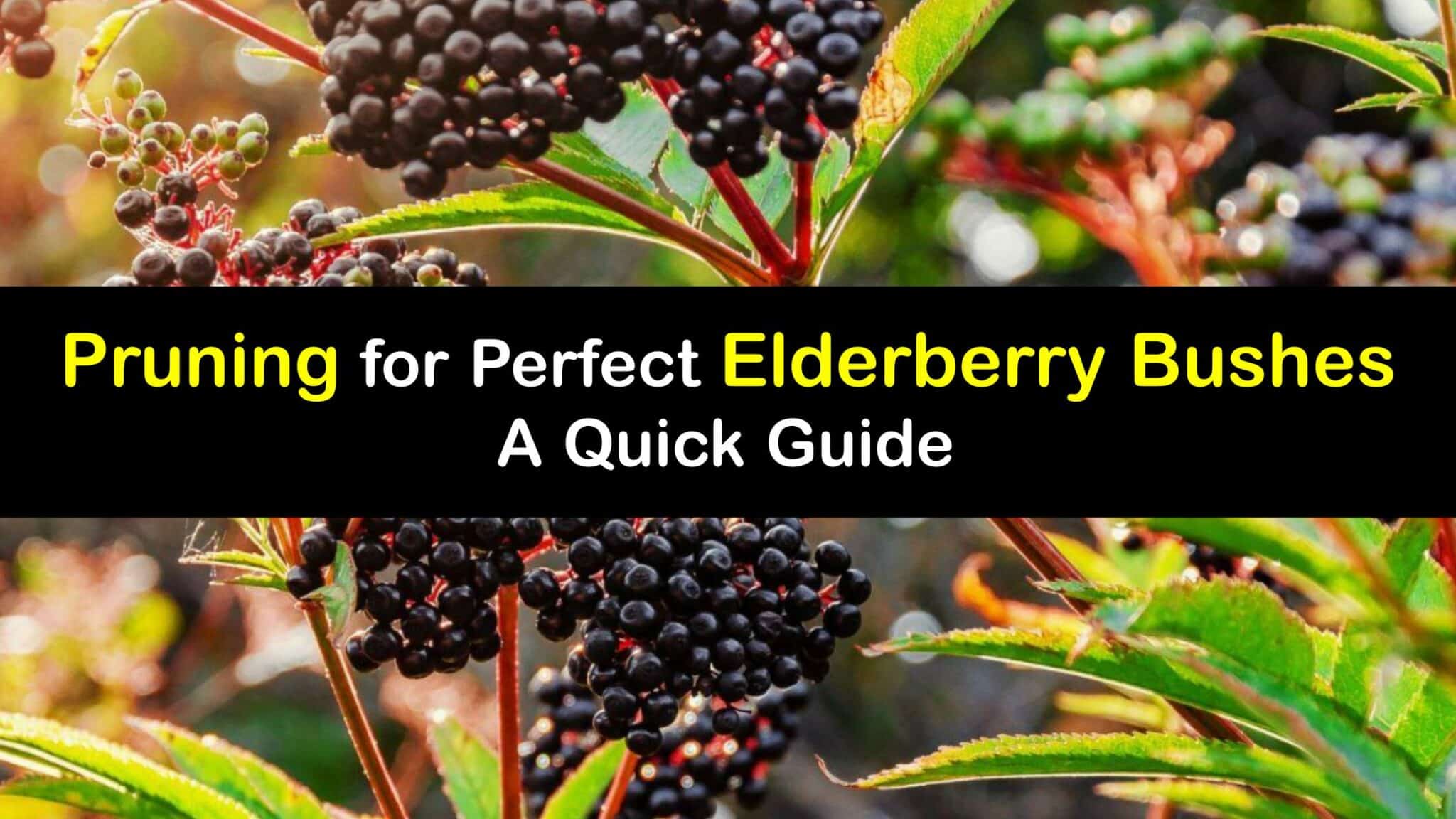Elderberry bushes are a wonderful addition to any edible landscape. The antioxidant-rich berries can be eaten fresh or used to make syrups, jams juices and more. However proper pruning is essential for keeping your elderberry bushes healthy and productive. In this article, we’ll go over when and how to prune elderberry bushes for maximum yield.
Why Prune Elderberry Bushes?
Pruning accomplishes several important tasks:
- Removes dead damaged and diseased wood. This prevents disease spread and pests.
- Thins out overcrowded branches for improved air circulation and light penetration This allows for better fruit production.
- Encourages the growth of new fruiting wood. Elderberries fruit on one and two year old canes.
- Maintains a manageable height for easy harvesting.
- Rejuvenates neglected bushes by cutting back old wood.
When to Prune
The timing of pruning is crucial. For most fruit trees and bushes, pruning is done when the plant is dormant in late winter or very early spring. The reasons are twofold:
- Pruning when the plant is dormant avoids accidentally removing new growth that will form fruit and flowers in the coming season.
- Open wounds heal quicker when pruning is done right before spring growth starts.
Specifically for elderberry bushes, late winter pruning should occur after the coldest part of winter has passed but before new growth emerges. In most climates, the ideal pruning window is February to early March.
Pruning Young Bushes
For the first two years after planting, let young elderberry bushes grow freely. This allows them to become established. Any dead or damaged branches can be removed, but avoid major pruning.
Lightly trim back the tallest branches by a few inches to encourage outward bushy growth. But keep the overall shape intact to build a strong framework.
Pruning Established Bushes
On established elderberry bushes, pruning is done annually to rejuvenate and maintain productivity. Follow these steps:
1. Remove Dead, Damaged and Diseased Wood
The first priority is to remove any dead, damaged or diseased branches. Look for:
- Dead, dry and brittle wood
- Branches with cracks, splits or major holes from pests
- Discolored or spotty stems, which indicate disease
Cut all unhealthy wood back to where it connects to a healthy branch or main trunk. Disinfect pruning tools between each cut to prevent spreading issues.
2. Thin Out Overcrowded Areas
Elderberry bushes tend to grow in a vase-shaped form, with branches clustered toward the center. Over time, the interior can become overcrowded with little air flow.
Selectively remove inward facing branches, as well as branches that rub or cross over each other. Keep 4-6 inch spacing between branches for good air circulation.
3. Remove Old Non-Fruiting Wood
Elderberries fruit on one and two year old stems. Older branches become less productive as they age. Pruning out older wood encourages the plant to continually generate new fruiting wood.
Identify older branches by their thicker diameter and darker bark compared to younger stems. Remove older non-fruiting branches all the way back to the ground.
4. Shape and Contain Bush Height
Unpruned elderberry bushes can reach 8-12 feet tall or more. For easy access, prune to keep bushes within a manageable height range.
To shape the bush, selectively trim back last year’s growth by several inches. This encourages the plant to grow bushy and outward.
For overgrown bushes, renewal pruning may be needed. Cut main branches back to 1-3 feet high to completely rejuvenate the plant.
5. Remove Suckers and Runners
Elderberries send up suckers from the stool (base) and downward growing roots. These divert energy from the main bush. Dig out suckers when they are small. For larger suckers, cut off at ground level.
Likewise, remove runners (horizontal stems) that spread out from the main bush. Keep your elderberry contained to the desired area.
By pruning elderberry bushes at the right time and using proper technique, you can maintain healthy, highly productive plants for years to come. The effort pays off when you harvest bowlfuls of delicious, homegrown elderberries!
When to prune sambucus
The best time to prune elderberries is in autumn. However, you should wait until October, after elderberries have been harvested, before cutting your elder bush back. You can also cut back your elderberry trees and bushes between the end of January and the start of March.
You want to know who’s behind Plantura?


I studied agricultural sciences and have always preferred spending my free time outdoors. Besides being interested in farming and gardening, I love taking pictures and almost never leave the house without my camera. I can usually find a great picture that shows the beauty of nature, whether it’s a landscape, a flower, or a wild animal. Favourite fruit: strawberries, blueberries, plums Favourite vegetables: radishes, tomatoes, pumpkin.
Do you know when to prune your Sambucus and how to shape your elderberry tree? Read on to learn the best ways to prune elderberry bushes.

The woody plant Sambucus grows quickly, about 50 to 70 centimeters per year. It is also known as elderberry or elder. If you don’t prune elderberry, it turns into a wild bush in just a few years and can grow up to seven meters tall. Elderberry bushes need to be pruned back every year to keep them in shape and make sure they flower and fruit profusely. Like most shrubs, elderberries should not be pruned every year until the year after they were planted. Elder grows as a shrub in the wild, but with regular pruning, elderberries can be shaped and trained into a tree. This article tells you how to prune and shape elderberries and when is the best time to do it.
Read our in-depth article on elderberries to learn more about how to plant, care for, and propagate them, as well as the different species and varieties of elderberries.
360 Farms – Pruning Elderberry
FAQ
What is the proper way to prune an elderberry bush?
What is the lifespan of an elderberry tree?
Do you need 2 elderberry bushes to get fruit?
How long does it take for an elderberry bush to produce berries?
- The Ultimate Guide to Growing Strawberries in Raised Beds - August 8, 2025
- No-Dig Garden Beds: The Easiest Way to Grow a Beautiful Garden - August 6, 2025
- How to Protect and Preserve Wood for Raised Garden Beds - August 6, 2025

